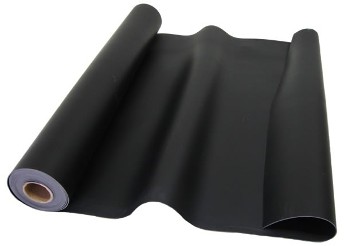
Soundproofing a boat can be a relatively simple project if you are willing to follow a few careful steps. If your water craft has a stern forward in board engine, then what you need to look at are the engine hatch and the hull walls and spars.
The premiere product used for boat soundproofing is what we call America Mat closed cell foam. America mat is PVC-NBR foam that acts as both a blocking agent as well as an absorber. This combination is exactly what you want to soundproof your boat.
Your first priority is to treat the underside of the engine hatch by adhering the America mat to the underneath surface of the hatch. The best thickness for this application is the 1” thick America mat. America Mat is a flat black smooth surfaced foam that will be glued to the underside of the hatch. You can use any type of waterproof adhesive, but we recommend the 3-M77 or 3-M80 spray contact cements. The first step for installing the America Mat is to cut it to fit perfectly into the cavity on the underside of the engine hatch. When cutting the America mat we strongly suggest using a electric meat cutting knife, you know the kind your mother used back in the 1970’s and 80’s. These electric knives will cut the foam leaving a nice factory smooth edge and the knife can also make it easy to bevel or radius the edge of the foam to make the installation look professional. The America mat has been used extensively in Custom automobiles such as Ferrari’s and Lamborghini’s so you know it looks professional.
Once the America mat foam is cut to fit, you may want to tale san paper and rough up the underside of the engine hatch. Once you have scuffed the surface, it is time to apply the adhesive. First you will spray the underside of the hatch as stated on the can and also spray the side of the foam that will be glued down. Let both pieces set apart as long as the can states and then carefully adhere the 2 pieces together and press firmly. I recommend that you allow the adhesive to cure over night before replacing the hatch back over the engine compartment.
Just this simply project will help to dramatically reduce the noise that would normally be transmitter to the deck surface. It is a good idea to adhere the America mat foam to the inside surface of the boat hull especially if the engine compartment does not have a wet bilge.
This step is imperative if you have living quarters below deck. Treating the bulkheads with the 1” America mat can mean the difference between a restful night’s sleep and a night of tossing and turning.
To learn more about soundproofing your boat, call one of the Pros at Soundproofing America, Inc. You’ll be glad you did. This is Dr. Bob, Adios!




